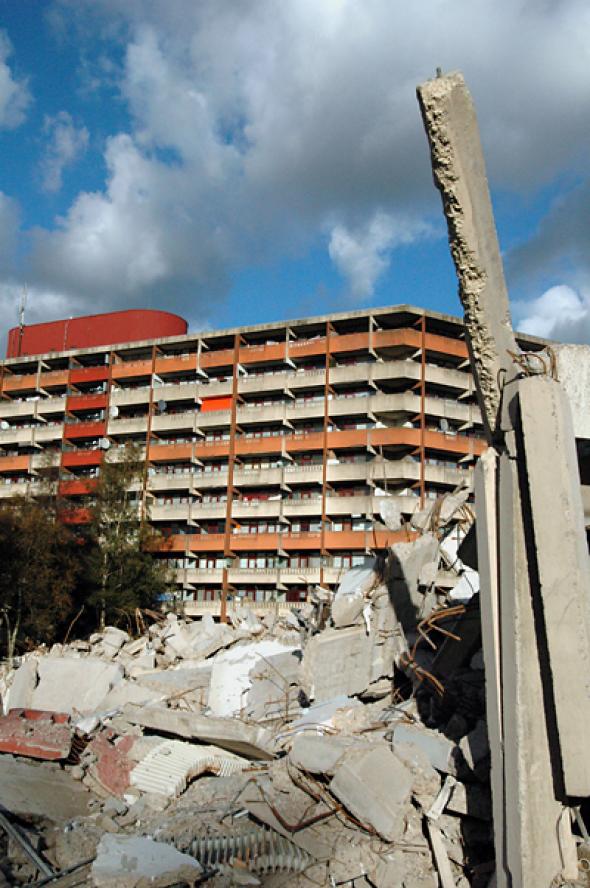Extreme Makeover
Amsterdam is undergoing a historic process of regeneration. Much of the city’s reserve of social housing is being transformed into luxury accommodation for the growing numbers of ‘creative economy’ employees. Meanwhile, waiting lists for the remaining social housing are flooded by former occupants forced out of their homes and neighbourhoods by renovation programmes. Merijn Oudenampsen describes a process of urban ‘rebirth’ through place branding and social cleansing
Do not start with the good old things; start with the bad new ones – Bertolt Brecht
According to a recent report by the Amsterdam city council, in coming years more houses are going to be demolished than ever before in the turbulent history of this town. It is the so-called ‘restructuring neighbourhoods’, poor areas such as Westelijke Tuinsteden, Noord en de Bijlmermeer, where most of the houses will have a close encounter with the wrecking ball. The pre-war neighbourhoods, such as the Staatsliedenbuurt, the Oosterparkbuurt, the Indische Buurt or the Kinkerbuurt are the subject of thorough renovations.[1] Overall, tens of thousands of social housing apartments will disappear to make way for the sand blasted facades that distinguish the homes of the new middle class.
This development isn’t restricted to Amsterdam. Minister Dekker’s national housing policy underlines the need to ‘differentiate’ and to ‘socially mix’, or, in other words, move higher earners into the poor neighbourhoods where social housing predominates. Although sociological research has yet been unable to prove any of its alleged social mobility-boosting effects, social mixing is – according to Dekker’s urban planners – a potent means to deal with the social problems of ‘backward’ neighbourhoods. The perverse logic of the urban renewal plans is that the less well-off inhabitants of the ‘backward’ neighbourhoods, who are supposed to be the beneficiaries of the policy, are also its main victims. Large proportions of neighbourhood residents are being forced to leave when their houses are renovated as luxury apartments. The Turkish grocery stores and their patrons are being forced to make way for the beauty salons, art galleries and boutiques servicing a very different demographic.
Underneath the inflated rhetoric of social mixing, where terms such as social integration, upward mobility and cultural diversity predominate, there is another agenda. It’s an agenda filled with the sober calculation of economic interests. Since its partial privatisation in 1994, social housing corporations are themselves solely responsible for balancing their budgets, and are allowed to compensate for the loss of state subsidies by selling off social housing stock. In the current urban renewal process they do so with enthusiasm.[2]
However, to be able to sell or rent the houses for the appropriate price, the area has to be made attractive for new arrivals. Publicity campaigns are set up, PR agencies too, cultural festivals and poetry readings take place, artists are offered temporary residence; everything is done to change the image of the area from that of a loose cohabitation of immigrants, unemployed, elderly, and other economic losers to the image of a dynamic and cultural hot spot, pervaded by the buzz of renewal. This is the place to be.
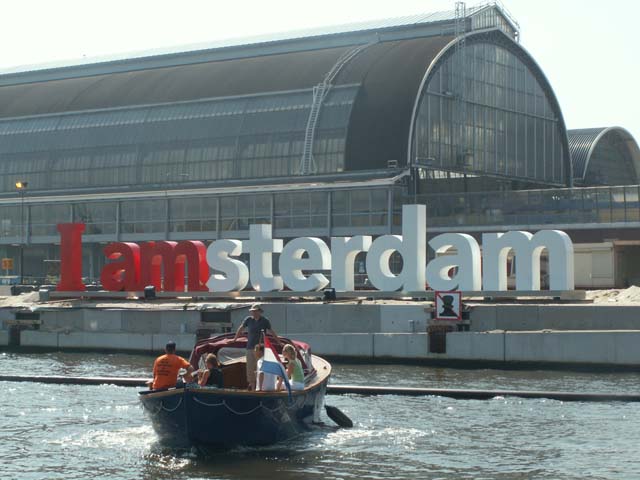
The I amsterdam Model
The urban renewal plans are part and parcel of a bigger metamorphosis of the city, preparing it for the ‘creative era’. In an age in which the creative knowledge economy has allegedly become the most important economic sector, it is the creative, highly educated and talented workforce – the creative class – that decides the economic destiny of cities. Allegedly, this new class is also extremely mobile and savvy about its choice of city. Amsterdam is thus competing with other international metropoles – London, Barcelona, Berlin – to lure creatives with culturally interesting surroundings and the quality of its urban habitat. Amsterdam, not wanting to fall behind, brands itself as a ‘Creative Knowledge City’ and starts the marketing campaign ‘I amsterdam’.[3] While art and culture never rated high on the aldermen’s priority list, they have suddenly gained central importance in the marketing offensive.
The urban planners have no reason to complain. The amount of Amsterdammers earning double the mean income has risen in the short period from 1999 to 2003 from 10.8% to 18%. Amsterdam gentrifies. As a result, space is becoming more and more expensive in the city, which means that it is now more attractive to sell some of the social housing in the popular neighbourhoods. Another consequence of the city’s economic success is that the city edge, previously the territory of a frivolously experimental group of artists and squatters, is being replaced with a sterile environment of high priced houses and architecturally unimaginative glass-surfaced shoebox offices. The eviction of the squatted warehouse Pakhuis Afrika for the docklands spectacle, Sail 2005, marked the completion of this transition.[4]
The influential ideologue of Amsterdam Creative City, social geographer Sako Musterd, states in his research that one of the shortcomings of Amsterdam is a lack of proper housing for the creative class. The Amsterdam business community – represented through the chamber of commerce – goes one step further, stating in their press communiqués that the less educated have to leave town to make space for creativity to move in. Politicians and bureaucrats have meanwhile reinvented themselves as true entrepreneurs. Mayor Cohen speaks about the Amsterdam brand, the city is being run as a business, and branding has grown to become the new maakbaarheid.[5]
This new urban management, which I have called the ‘I amsterdam model’, has also reached the neighbourhood level. City regions are competing for the attention of the more highly educated middle class in the attempt to secure their own economic success. Every neighbourhood organises cultural events, Westerpark has the Westergasfabriek, the Kinkerbuurt has de Hallen, Noord the former NDSM warf, the Indische Buurt the Timor-school and even in the notoriously boring suburban area of the Kolenkitbuurt in Bos en Lommer, apartments are being sold with the mention of new cultural establishments in the vicinity.
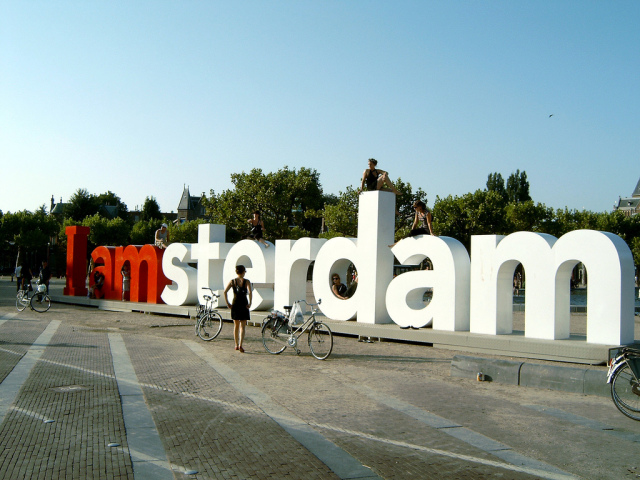
Housing Shortage
Under the I amsterdam banner a radically different form of urban management and renewal has arrived. Old architecture is being upgraded or completely demolished and, in parallel, accounts are being settled with the ideas and ideals present at the foundation of the previous architectural regime. From the red-brick-socialism of architect Berlage, Le Corbusier’s dys-functionalist utopia of reinforced concrete as embodied in the flats of the Bijlmermeer and the Parisian banlieux, to the ‘bouwen voor de buurt’ of alderman Schaeferi, the history of urban renewal is filled with the hope of achieving the elevation of the people, of emancipation through the drawing board.[6] In the ’70s a new set of ideals saw integration, upward mobility and emancipation taking place at neighbourhood level, with the assistance of an entire infrastructure of neighbourhood centres and social workers.
I amsterdam’s current regime of urban rebirth has abandoned these concepts. Poverty can be moved – distributed – but not remedied. While hitherto urban renewal targeted the lower classes, the new urban renewal is directed towards the middle class, that is, it functions as a Trojan horse to reconquer the poor neighbourhoods and expropriate property from their inhabitants. The ex-occupants are offered financial compensation; for most, the direct personal impact is a rent increase or the obligation to relocate. Nonetheless, displacement of a whole stratum of the population is the result. What makes the Dutch gentrification process so subtle, is that the effect is indirect: due to the many displaced residents being conferred priority status for rehousing, those without it have to wait even longer for social housing. Hence, the worst effects are displaced onto others, especially younger generations and newcomers to the city. For students in Amsterdam, large temporary container housing projects have been built.
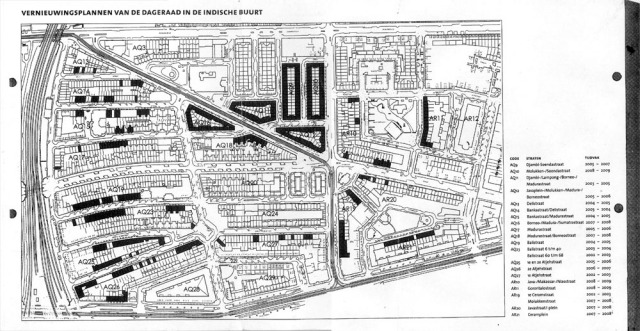
The developments in the Indische Buurt in Amsterdam are a good example. The neighbourhood is one of the areas that will be given a thorough facelift in the coming years. About 20 percent of social housing (2,000 apartments) will disappear through demolition, conversion and renovation. Change in the composition of the neighbourhood’s predominantly immigrant population is officially the most important goal, and urban renewal thus becomes a form of social and racial engineering through state-led gentrification.[7]
Planners from the local council state that the new neighbourhood policy is no longer about ‘fighting problems’, but ‘the creation of opportunities’. It is this kind of vague language that legitimises large amounts of money earmarked for backward neighbourhoods being spent on marketing campaigns and subsidised business locations for creative entrepreneurs. The local council has enlisted the services of a PR agency which distributes a colourful glossy. Leafing through its pages, you will see images only of white people – in an area where 70 out of every 100 inhabitants are first or second generation immigrants – telling you how beautiful their new houses are and praising the cultural activities in the neighbourhood. The real perversity starts when it becomes clear that the renewal plans openly state the intention of removing immigrant entrepreneurs from the neighbourhood. The plan literally reads ‘the appearance of most of the shops leaves much to be desired. The number of migrant shop owners has grown drastically in the last couple of years.’[8]
Exclusive Inclusion
The local council wants more luxury shops and has started a ‘discouragement policy’ to remove Turkish grocery stores, coffeeshops and call shops from the main shopping street. While some policy makers mention growing immigrant entrepreneurship as a great success in the integration process, others perceive it as a problem to be solved by removal.
This is the new logic of inclusion and exclusion in urban renewal. In the I amsterdam model talent is sought after and social problems kept at bay. But again, the model is not restricted to Amsterdam: also Rotterdam is part of the avant-garde. With less marketing and more fanaticism, immigrants and lower income residents are slowly being removed from the inner city. It is becoming less and less clear where all these ‘problems’ can eventually go. The Amsterdam city council’s estimates show that by 2008 so many people will have had to leave their houses as a result of the regeneration process that the entire Amsterdam area does not have enough replacement social housing to re-accommodate them.
At the same time fewer houses are being developed than promised. In July 2005 the local newspaper carried a claim by a real estate broker that the council has consciously fostered a housing shortage. Now that the upward course of the housing market is slowly abating, the strange consequence is that the council has an interest in keeping a housing shortage in place to guarantee a good price for the new houses produced by the city’s redevelopment.[9]The policy is creating a situation where council statistics themselves show that the official primary target group of the housing policy – those on lower incomes – are the people with the smallest chance of actually finding social housing. The main victims of the continuing housing shortage are predominantly immigrant families and youth. For them I amsterdam is a highly exclusive brand.
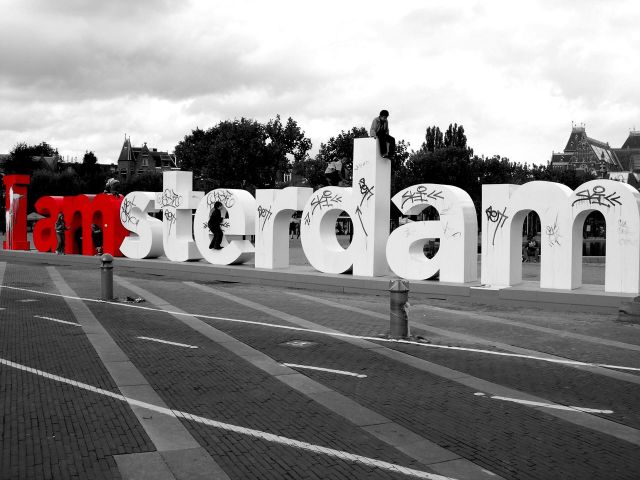
Postscript
In the west of the city, where one of the biggest redevelopment projects in Europe is being realised, the process has stalled. In this area, which due to its size serves as a role model for other developments, it turns out the market has its limitations after all. Middle class interest in the poor neighbourhood and its newly constructed owner-occupant apartments is lower than expected, most turn out to prefer single family dwellings. The new challenge for the scheme’s designers is to concentrate as many of the original occupants as possible in high density constructions, while leaving luscious green space for the more private and expensive housing. What will assist the process is that the city council, in financial distress, has outsourced neighbourhood participation schemes and decision making to the housing corporations. In general, statistics show that most of the people staying behind in the neighbourhood’s residual social housing have not benefited from renewal as promised. The continuing social-economic problems in depressed neighbourhoods limit the marketability of space, forcing the city council to reconsider commencing social investment programmes. The renewal in west Amsterdam so far has turned out to be an economic and social failure.
[1] Rapport Woonvisie Amsterdam, http://www.dienstwonen.nl
[2] The Netherlands is blessed with a very big social housing sector. Here’s some essential info: in Amsterdam roughly 70 percent of housing is rented and 50 percent of this is social housing. To apply for social housing you have to wait in line. The queue in Amsterdam has grown to a mean waiting period of 7.5 years. This is partly because a large quantity of middle income people live in social housing. Outside of social housing there is almost no genuinely affordable rental housing. Those that are forced to leave their homes due to urban renewal are given general priority on the waiting list, and specific priority to get a home in their original neighbourhood. However, due to the fact that the amount of social housing in any given redevelopment area is decreasing, there is not that much choice. A lot of the ex-inhabitants end up on the periphery of the city, where housing is still relatively cheap and often also more spacious. Usually they have to face an increase in rents.
[3] For examples of the approaches to urban regeneration Amsterdam is taking, borrowing extensively from UK ideologues, see the conference Creative Capital: Culture, Innovation and the Public Domain in the Knowledge Economy, Amsterdam, March 17 and 18 2005, http://www.creativecapital.nl
[4] Sail is a big maritime event, basically a parade of large sailing boats old and new through the city harbour. Most of the boats are hired by the Amsterdam business community to hold receptions.
[5] Maakbaarheid is not an easily translated concept: ‘the ability to shape, form and control every aspect of the social and physical environment; the belief that a country can be planned or made’. A modernist and progressive notion that in common Dutch understanding is believed to have died somewhere shortly after the ’70s.
[6] Schaefer was a famous Amsterdam alderman who vigorously coordinated the urban renewal wave in the late ’70s and ’80s. ‘Bouwen voor de buurt’ literally ‘building for the neighbourhood’ was a policy whereby urban renewal was specifically tailored to the needs of the original inhabitants of the neighbourhood and allowed them to return after the construction works.
[7] Until recently gentrification was only a very limited phenomenon in the Dutch housing market. Most poor neighbourhoods consisted mainly of social housing and were thus protected by law. With the privatisation of housing corporations and minister Dekker’s social mixing agenda, gentrification has now become part of the official housing policy.
[8] See page 32 of the Stedelijk Vernieuwingsplan Indische Buurt.
[9] The mean price of a house in the Netherlands has grown from €61,000 in 1985 to €224,000 in 2005; a rise of 367 percent.
Merijn Oudenampsen <merijn.o AT gmx.net> is part of the Dutch critical platform Flexmens, http://www.flexmens.org
He has been involved in organising political projects and debates around flexibility and precarity. Currently he is writing a thesis on ‘creative’ city branding, entrepreneurialism and gentrification in Amsterdam
Mute Books Orders
For Mute Books distribution contact Anagram Books
contact@anagrambooks.com
For online purchases visit anagrambooks.com


